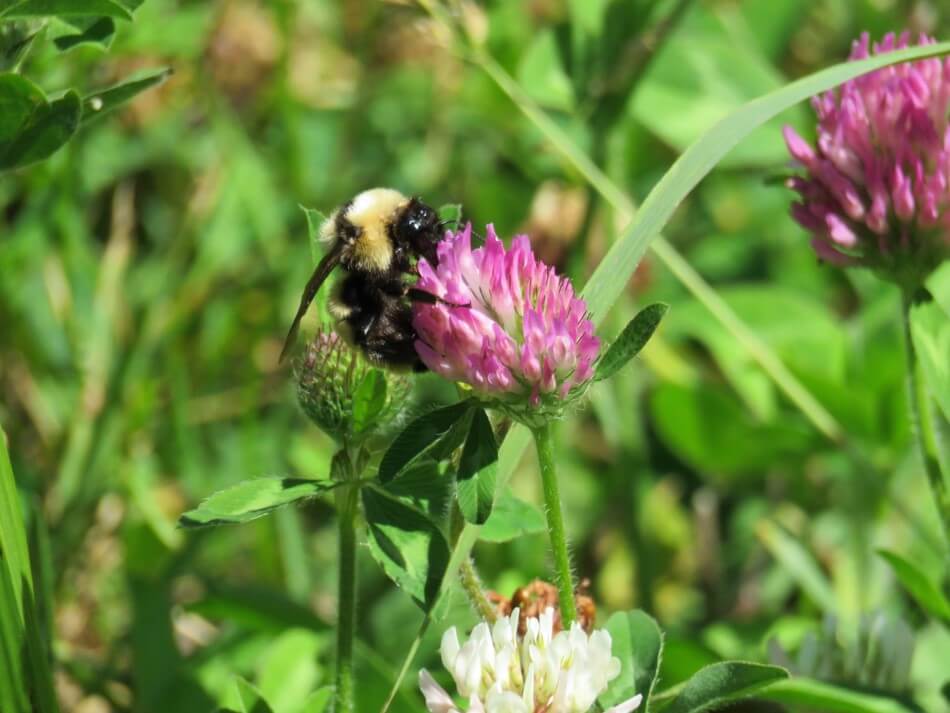


New Jersey is home to approximately 350 species of native pollinating bees. The popular and well recognized European Honey Bee is not native to North America and introduced and bred for agricultural pollination. Ranging from massive bumble bees to the smallest Andrena bees they possess a diverse range of life histories and occupy varied habitats in all corners of NJ. Many have very specific nectar and habitat requirements and may only spend a week or two as an adult visiting flowers while the entire rest of the year is spent as a larvae. Only the Bumble Bees are colonial and have a nest or hive while the majority of the other species are solitary or at the very least semi-colonial and sharing suitable habitat space with others of the same species. Some of these species are adapted to only pollinate certain species of plants and flowers. Nesting needs can be highly specialized with many digging soil burrows and others depending on hollow grass and plant stems. Some species are called leaf-cutters and line their burrows with pieces cut out of leaves. The carpenter bee, as its name implies, drills holes in to dry wood to build its home. NJ’s bee species are incredibly diverse and awe-inspiring and fascinating to study from a conservation point of view.

Even though Bees are often the focus when it comes to pollination, there are many other species of insects that are important pollinators. Butterflies and moths are some of our better-known other insect pollinators but hoverflies, wasps, ants and many species of beetles also serve this important function. Pollinators, including bees, bats, butterflies, moths, beetles, and other animals, are responsible for reproduction in 90% of the world’s flowering plants, including food crops, by spreading pollen from flower to flower. They are vital to creating and maintaining the planet’s habitats and ecosystems. Insects make up a large proportion of this group and are under a variety of stressors impacting their own populations but also the plants which rely on them.

Unfortunately, many of these species are in decline due to habitat loss and fragmentation as well as from introduced parasites and pathogens. There are also several species of invasive bees that compete with our native species for nesting habitat and nectar resources. There is much that you can do to help out native bees through planting pollinator gardens and natural meadows and reducing the mowing and lawn maintenance that you do on your lawn or property. Reducing the use of pesticides also is highly beneficial to our native bees. It will take a concerted effort on the part of state and federal regulators, farmers, industry, homeowners and others to halt the decline of pollinators. The public can do its part by learning about the issues and taking action, including planting plants beneficial to native pollinators in their gardens and communities.
 Official Site of The State of New Jersey
Official Site of The State of New Jersey
